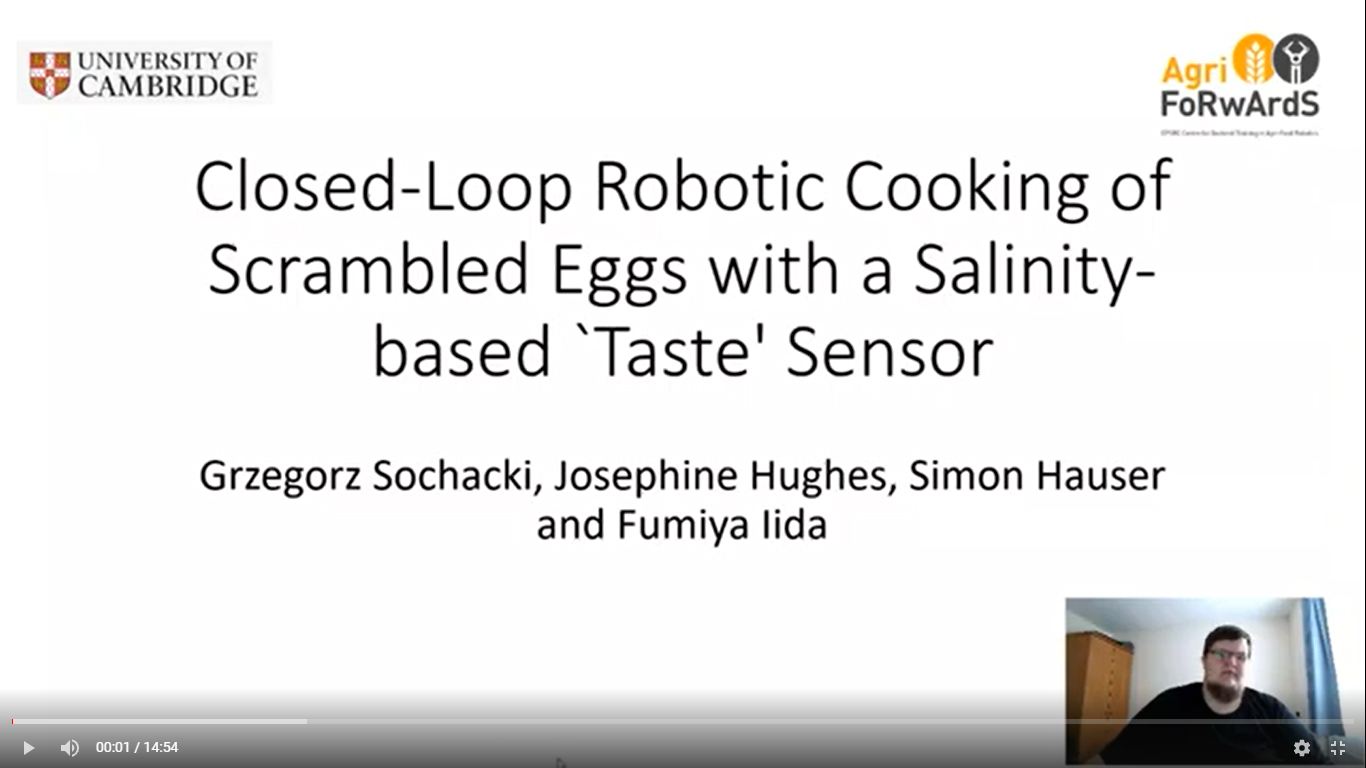At the end of September, AgriFoRwArdS CDT Cohort 1 Student, Grzegorz Sochacki, had the opportunity to present as part of the International Conference on Intelligent Robots and Systems 2021. IROS 2021 is one of the largest and most well established conferences on robotics worldwide, and to be invited to present as part of their programme is a huge achievement.

Grzegorz gave us a little insight in to the conference and his experience presenting;
Taking part in online conference always comes with mixed feelings. Excitement and curiosity at seeing the emerging state of the art solutions blend with thoughts of lost travel and in-person networking opportunities. But online conferences also have many advantages, like saving time and being able to hop between all 16 halls at will. The pinnacle of this flexibility is building your own personal program for the conference.
The preparation to present is also specific. There are two presentations required – a short one, which is given live, and a longer one, which is available on-demand to all users of the conference. The platform is also quite a bit of a step-up from everyday presentations on zoom. The slides are uploaded few weeks before the conference, and the flow of the presentations is controlled by a chairman. The room has a schedule, which is visible and updated in real-time, giving a clear view for the presenter. When the time comes the presenter is given control over slides and has 2 minutes to present followed by 4 minutes for questions. Overall the experience is very smooth and it foretells well for the future of online events.
My presentation covered research done in cooperation with other members of Bio-Inspired Robotics Laboratory. The project looked into the possibility of using taste sensors in robotics. Taste is a sense crucial for the survival of most living organisms, ranging from bacteria deciding to swallow substances in its vicinity, to a human meticulously tasting a dish in making to adjust his next action. The most crucial of its functions is a selection of food for consumption – stimulating intake of favourable ingredients and avoiding toxins. The particular challenge is the fact that taste can be easily influenced by culture, mood or environment – which are factors extremely hard code. It also shows a hysteresis, both in a short timescale(eating a bar of chocolate after brushing teeth) and a longer timescale(getting used to more or less salty food). I took the first bite of this topic by using a saltiness(conductance) sensor on scrambled eggs. This sensor makes a particularly interesting combination with eggs, due to the inherent difference of conductance between white and yolk. It allows an easy way to taste a difference between these two. Provided few tens of measurements – statistics can be used to return a single number measure for “mixed-ness”. The average salinity can also be determined simply by taking an average of these measurements – therefore providing the 2nd “taste metric” for the dish. Equipped with giving the robot a way to taste a dish, I applied a control loop, which was able to settle at producing a dish of specified parameters. The last step was to taste human-cooked eggs and use them as a goal for the control loop. The whole system showed the ability to replicate multiple versions of human-cooked scrambled eggs. Future research will be focused on progressing from sensing to perception.
You can watch Greg’s talk on the AgriFoRwArdS YouTube Channel.
